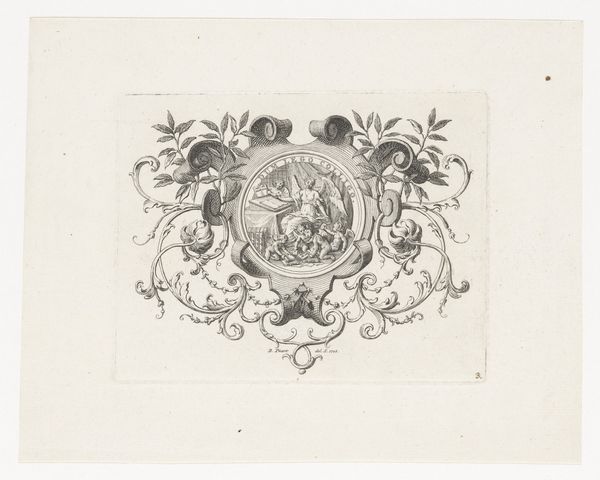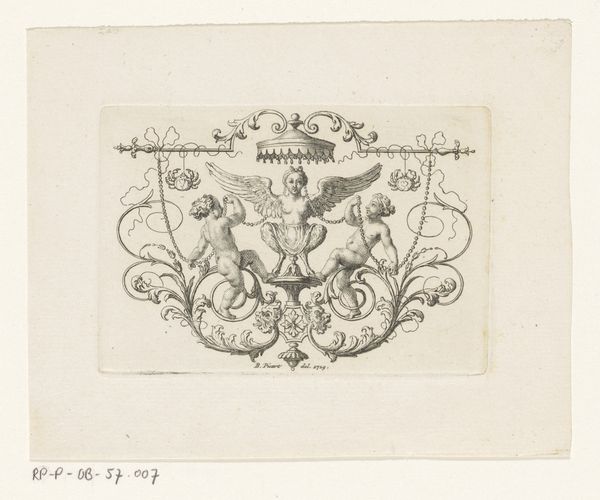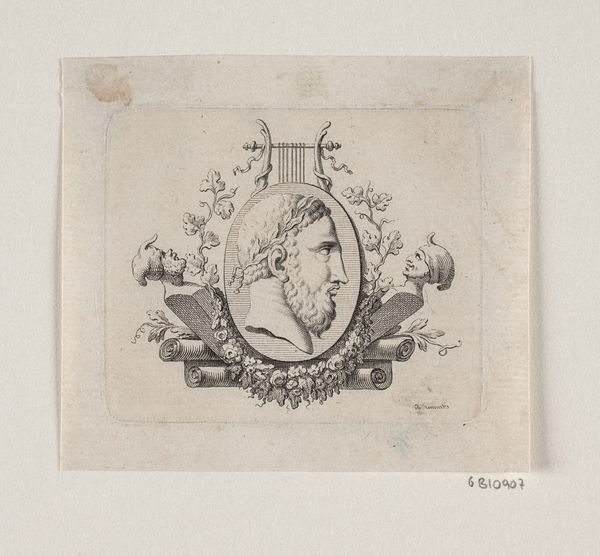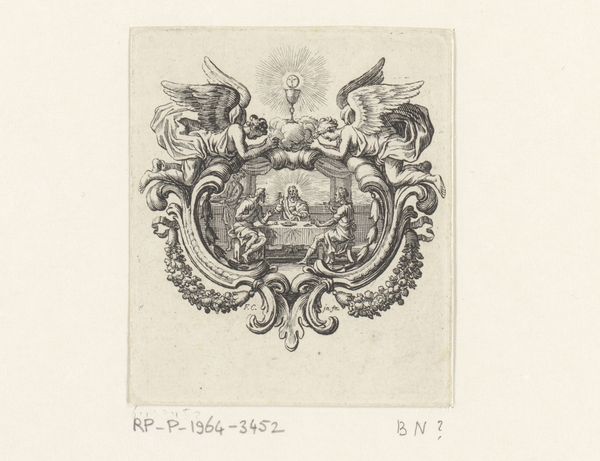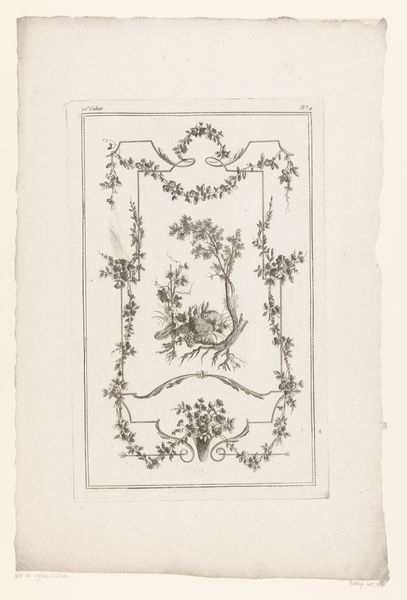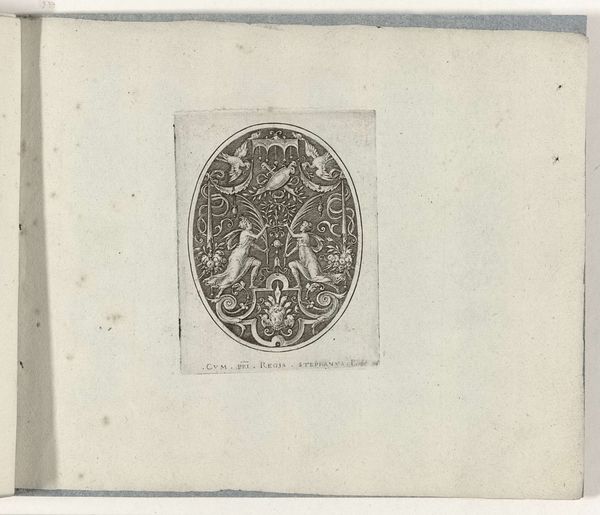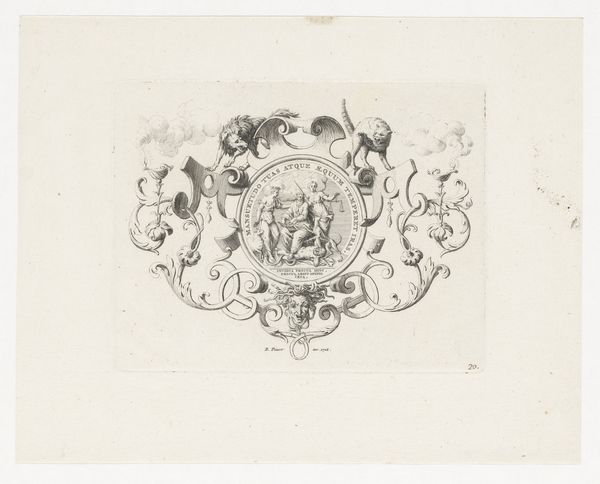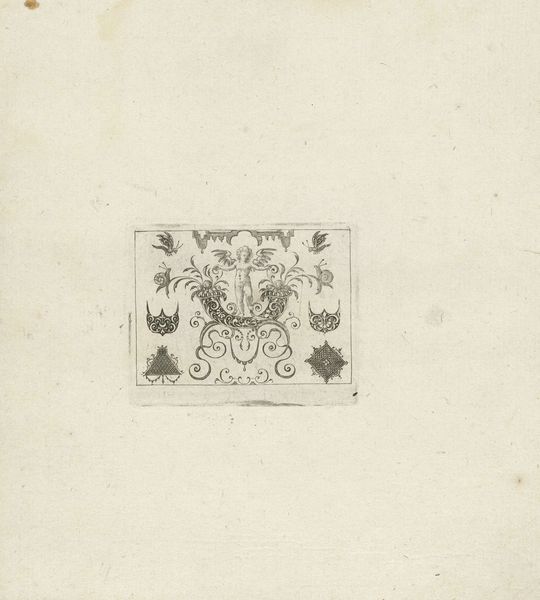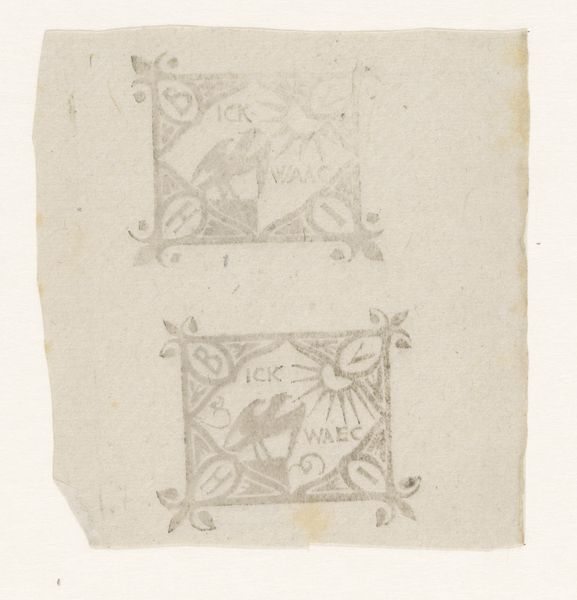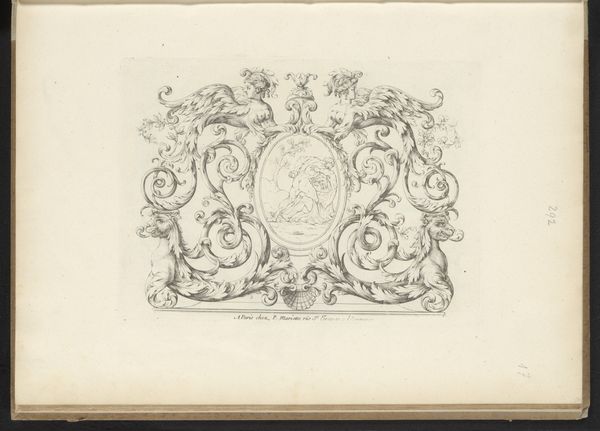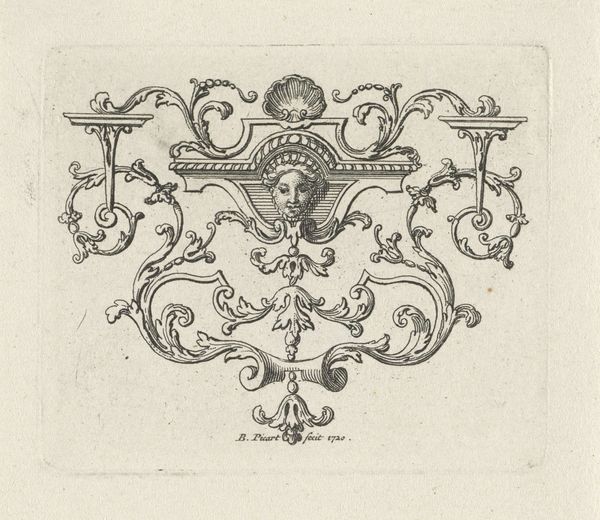
drawing, print, engraving
#
drawing
#
baroque
# print
#
figuration
#
line
#
engraving
Dimensions: height 74 mm, width 69 mm
Copyright: Rijks Museum: Open Domain
Curator: Before us we have an engraving from somewhere between 1608 and 1688, attributed to Claude Mellan. It’s entitled "Wapenschild met leeuw, omringd door bladerkrans", or "Coat of arms with lion, surrounded by leafy wreath" and is currently held in the Rijksmuseum. Editor: Immediately, what strikes me is how intricate the lines are! There’s such delicate work in rendering that leafy wreath; I wonder what kind of tools Mellan would have been using to achieve this effect, and how the mass production of similar symbolic works would have influenced the demand for such craftsmanship. Curator: Absolutely. This kind of engraving served as a readily reproducible emblem, reinforcing specific aristocratic lineages and civic identities at a time of tremendous socio-political transformation. Editor: You see the socio-political, I see the actual physical labor involved. Just envisioning the focused repetition... What does the heraldry tell us? Is the lion common, or specific to a certain region or family? Curator: The lion, of course, is a classical symbol, often associated with bravery, nobility, and royalty. As such, it's fairly common in heraldry across Europe. Here, you see it on a shield surrounded by what looks like a laurel wreath – itself suggestive of victory and honor. Together, they likely represented an idealized identity associated with a particular noble house. What gets intriguing is discovering precisely which house. Editor: And were such prints unique commissions, or was Mellan operating within a commercial network? The standardization suggests a system of production, doesn’t it? Curator: Possibly a little of both. Mellan had commissions from notable figures. At the same time, workshops often operated churning out similar symbolic works, so the artist could benefit from an open market of reproduced heraldry like this piece. These images served as visual cues within a very rigidly stratified society. Editor: The idea that a single print, made possible by such careful, material processes, would then be multiplied and dispersed to visually enforce social hierarchies... it gives the whole process a somewhat cynical overtone in my mind. Curator: An excellent point! I would propose we consider that the production process could represent various ambitions: civic, personal, even economic—all playing their roles in its creation and its prolonged afterlife within society. Editor: So the layered labor involved in creating, disseminating and decoding the emblem gives the entire image and the social structures it depicts added dimension. Food for thought!
Comments
No comments
Be the first to comment and join the conversation on the ultimate creative platform.
